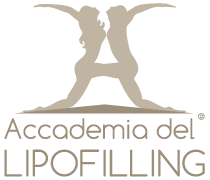lipofilling, also known as lipostructuring, is a “natural and safe” method of correcting unsightly imperfections that has become almost indispensable in plastic surgery, where it finds effective applications in both cosmetic and regenerative medicine.
In cosmetic surgery it is used to improve and define the profile of the face, breasts, buttocks, hands and calves, and in regenerative medicine it proves most useful in correcting post-traumatic and/or post-surgical defects.
Lipofilling involves the extraction of adipose tissue (fat) via liposuction from areas where it accumulates, such as the abdomen and the thighs, and transferring it to other areas of the same body where it is needed, after a process of centrifugation (spinning) or decantation (gravity separation). This autologous (self) transplant of processed adipose tissue was the first method in regenerative surgery that was scientifically demonstrated to be efficacious and to enable the assembly of the three key elements for regeneration, as it contains adult mesenchymal (stem) cells and growth factors, which find the necessary biological scaffold in the recipient tissue at the graft site.
The most important advantages of the technique are:
- The results are permanent, as very little of the transplanted fat is absorbed by the recipient site.
- Grafting adipose tissue activates a series of biological regeneration mechanisms that promote tissue restructuring and the integration of the transplanted fat at the graft site.
- As the graft is autologous (the donor and recipient are the same person), there is no risk of any allergy developing.
- No synthetic biomaterials (e.g., silicone implants) need to be used.
- The end result is both natural looking and aesthetically pleasing.
- Surgical costs are relatively low.
- Post-surgical scarring is minimal.
